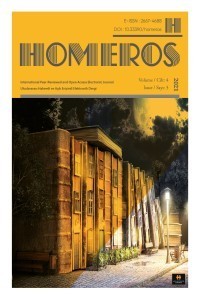IDEO-THEMATIC AND NARRATIVE STRUCTURE OF ALBANIAN RITUAL SONGS
Man learned to celebrate religious rites, feasts of the hunt, of the beginning of the seasons, and to accompany them with ritual songs, which we may still encounter in areas not affected by ‘modernity’. However, it is difficult to imagine a dumb civilization, unable to sing to express its feelings. Therefore, it is the song, which has often given voice to the collective passions in the great moments of labor, trust (idealism), and pleasure. When we talk about mythology, as a worldview phenomenon, we can say that it is very ancient, and has always been subject to the historical specifics and demands of different epochs. So, mythology has undergone changes not only in the informative and narrative level of the subjects but also in the ideological interior, changes which will be the object of study. Knowing that mythology is a specific ideology, as is poetry and art, on which the epochs have left their indelible marks we will undoubtedly treat mythology very carefully from this perspective, as well. Man, in the face of nature and vain beliefs, has always felt weak, so this weakness has pushed him to create various rites, by virtue of which he tried to influence the mysterious forces, to bring him good fortune throughout the year.
IDEO-THEMATIC AND NARRATIVE STRUCTURE OF ALBANIAN RITUAL SONGS
Man learned to celebrate religious rites, feasts of the hunt, of the beginning of the seasons, and to accompany them with ritual songs, which we may still encounter in areas not affected by ‘modernity’. However, it is difficult to imagine a dumb civilization, unable to sing to express its feelings. Therefore, it is the song, which has often given voice to the collective passions in the great moments of labor, trust (idealism), and pleasure. When we talk about mythology, as a worldview phenomenon, we can say that it is very ancient, and has always been subject to the historical specifics and demands of different epochs. So, mythology has undergone changes not only in the informative and narrative level of the subjects but also in the ideological interior, changes which will be the object of study. Knowing that mythology is a specific ideology, as is poetry and art, on which the epochs have left their indelible marks we will undoubtedly treat mythology very carefully from this perspective, as well. Man, in the face of nature and vain beliefs, has always felt weak, so this weakness has pushed him to create various rites, by virtue of which he tried to influence the mysterious forces, to bring him good fortune throughout the year.
___
- AHMETI, A. M. (1986) Oral Literature of the Province of Plava and Guca, IAP, Prishtina.
- LÉVI-STRAUSS, C. (1966), Structural Anthropology, Il Saggiatore, Milan.
- ORORGJERVIC, T. (1923), Nas narodni zhivot, Belgrade.
- STIPÇEEVIQ, A. (1983), Symbols of the Illyrian cult, Prishtina.
- SHALA, D. (1972), Folk lyrical songs, ETMK, Prishtina.
- SHALA, D. (1986), Folk Literature, Prishtina.
- SEVERI, C. (1998), “Un altro chiamare. Ritual comunicazione therapy ”, in G. Roy, La bellezza dell’invisibile. L’ombra poetica del sintomo, Franco Angeli, Firenze.
- UUBUBELIC, T. (1988), Povijest i historija usmene narodne knjizhevnosti, Zagreb.
- XHANGOLLI, A. (1999), The Biblical Element in Albanian Folk Songs, “Christianity among Albanians” (Tirana International Symposium, 16-19 November 1999).
- ISSN: 2667-4688
- Başlangıç: 2018
- Yayıncı: Holistence Publications
